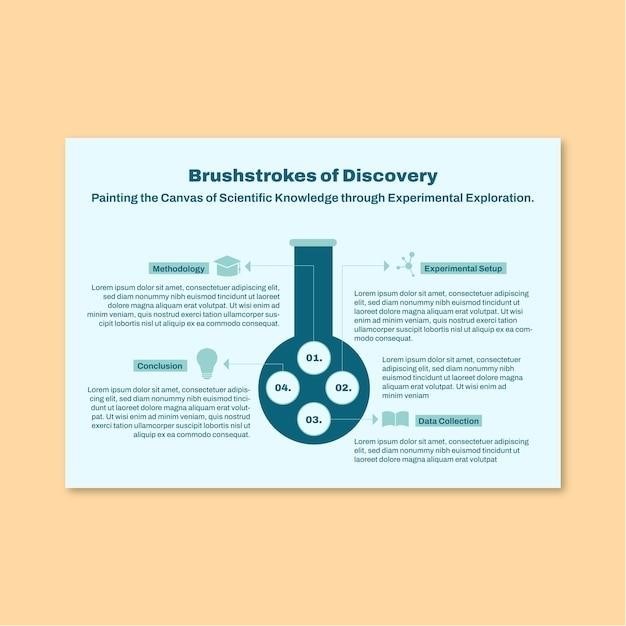Essentials of Lifespan Development 7th Edition PDF⁚ A Comprehensive Overview
This 7th edition offers a thorough exploration of human development across the lifespan. Updated research and engaging narratives make complex developmental theories accessible. Multiple formats, including digital and print, ensure broad accessibility for students and professionals.

Author and Publisher Information
The provided text mentions several authors and publishers associated with various editions of lifespan development textbooks. For instance, John W. Santrock is cited as an author of several McGraw-Hill publications, including editions of “Life-Span Development;” Denise G. Boyd and Helen L. Bee are named as authors of a Pearson publication, “Lifespan Development,” with a 7th Global Edition and a 7th Canadian Edition also referenced. The publishers involved include McGraw-Hill and Pearson, with the latter specifically publishing the 7th edition in both Global and Canadian versions. The text also mentions Laura E. Berk as the author of “Development Through the Lifespan,” a competing textbook with a 7th edition, published by Pearson. Different editions and publishers highlight the varying available resources for studying lifespan development.
Key Features and Updates in the 7th Edition

While specific details about the 7th edition’s updates are scarce in the provided text, several key features are implied. The consistent mention of “updated research” and “newest, most relevant research and applications” across different 7th edition mentions suggests a core focus on incorporating the latest findings in developmental science. The emphasis on “seamless integration of up-to-date research” and an “engaging narrative” points towards a pedagogical approach that prioritizes clarity and relevance for students. The availability of both print and digital formats (eBooks, Kindle editions, and PDFs) indicates a commitment to accessibility and diverse learning styles. Furthermore, the description of making “more abstract material about developmental theories approachable to students” suggests improvements in the clarity and presentation of complex concepts. The inclusion of multicultural and cross-cultural perspectives is also highlighted as a significant feature, reflecting a broader and more inclusive approach to the subject matter.
Significant Changes from Previous Editions
Direct comparisons between the 7th edition and its predecessors are limited in the provided text snippets. However, the repeated emphasis on “dramatically revised,” “fully updated,” and the integration of “newest, most relevant research” strongly suggests substantial alterations. The 7th edition likely incorporates significant advancements in developmental psychology since the previous edition’s publication. This update likely involves the inclusion of new research findings, theoretical perspectives, and possibly revised or expanded coverage of specific developmental stages. The claim that the 7th edition makes “more abstract material…approachable to students” implies improvements in pedagogical approaches and potentially a restructuring of content for enhanced clarity and understanding. Changes in the text’s structure, the inclusion of new case studies or examples, and an updated focus on multicultural perspectives are also plausible revisions, aligning with the overall goal of presenting the most current and relevant information in the field of lifespan development. Without access to the specific editions, these remain inferences based on marketing language.
Content Coverage⁚ Developmental Stages
While specific chapter breakdowns aren’t detailed in the provided text, a comprehensive lifespan development textbook typically covers all major stages. Expect in-depth exploration of prenatal development, encompassing germinal, embryonic, and fetal periods, detailing physical and cognitive growth. Infancy and toddlerhood sections would cover milestones in motor skills, language acquisition, and social-emotional development, including attachment theory. Early childhood would address preschool years, focusing on cognitive development (Piaget’s stages), social interactions, and the emergence of self-concept. Middle childhood examines school-age development, encompassing academic progress, peer relationships, and the development of moral reasoning. Adolescence would delve into puberty, identity formation (Erikson’s stages), and the challenges of navigating peer pressure and independence. Adulthood is typically divided into early, middle, and late stages, examining career development, relationships, family dynamics, cognitive changes, and the psychological impact of aging. The concluding sections often address death and dying, exploring grief and end-of-life care. The exact depth of coverage for each stage may vary.
Theoretical Approaches and Perspectives
The 7th edition likely integrates various theoretical lenses to illuminate human development. Expect a robust discussion of psychodynamic theories, particularly those of Freud and Erikson, emphasizing the role of unconscious processes and psychosexual/psychosocial stages in shaping personality. Cognitive theories, such as Piaget’s stages of cognitive development and information-processing approaches, would be explored, detailing how children construct their understanding of the world. Behavioral and social cognitive perspectives, encompassing classical and operant conditioning and Bandura’s social learning theory, would explain how environmental factors and observational learning influence behavior. Ethological and evolutionary perspectives, highlighting the adaptive significance of behavior and the influence of genetics, would be incorporated. Ecological systems theory, emphasizing the interplay between individual development and environmental contexts (microsystem, mesosystem, exosystem, macrosystem, chronosystem), would likely be discussed. Finally, lifespan development textbooks often address sociocultural theories, like Vygotsky’s sociocultural theory, which highlights the role of social interaction and cultural context in cognitive development. The relative emphasis on each theory may vary.
Research and Applications in the Field
The 7th edition would likely showcase the diverse research methods employed in developmental science. Discussions would encompass longitudinal studies, tracking individuals over extended periods, and cross-sectional studies, comparing groups of different ages at a single point in time. The strengths and limitations of each approach would be analyzed. Furthermore, the book would probably integrate findings from various research designs, such as experimental, correlational, and descriptive studies. Examples of research studies illustrating developmental principles would be presented. The text would likely highlight the application of developmental knowledge to real-world settings. Discussions might cover interventions in education, healthcare, and social policy informed by developmental research. The impact of developmental research on parenting practices, educational strategies, and geriatric care would also be explored. Ethical considerations in developmental research, including informed consent and protection of participants, would be addressed. Finally, the text might cover the importance of cultural sensitivity in research and applications, recognizing the diverse contexts in which human development unfolds.
Accessibility and Readability
The seventh edition likely prioritizes clarity and accessibility to cater to a broad audience. The writing style is probably designed to be engaging and easy to understand, avoiding overly technical jargon where possible. The text may incorporate various pedagogical features to enhance comprehension. These might include chapter summaries, key terms, and review questions to reinforce learning. Visual aids such as tables, graphs, and images would likely be used to illustrate complex concepts and make the information more digestible. The use of real-world examples and case studies helps to connect abstract theoretical concepts to students’ lived experiences, fostering better understanding and retention. Furthermore, the inclusion of diverse perspectives and examples from various cultural backgrounds enhances the text’s relevance and relatability. The overall organization of the book likely follows a logical and coherent structure, making it easy to navigate and follow the developmental trajectory. The digital format, if available, may offer interactive features, such as embedded videos or online quizzes, further enriching the learning experience and promoting accessibility. The text aims to provide a comprehensive yet easily accessible understanding of lifespan development for a wide range of readers.
Available Formats and Editions (Print and Digital)
The availability of the 7th edition of Essentials of Lifespan Development in both print and digital formats caters to diverse learning preferences and access needs. The print version offers a traditional textbook experience, allowing for annotation and ease of reading without reliance on technology. This physical copy provides a tangible learning resource that many students find beneficial for studying and note-taking. Conversely, the digital edition provides flexibility and convenience. It could be accessed on various devices such as computers, tablets, and smartphones, allowing for on-the-go learning. This digital format might offer additional interactive features not found in the print edition, such as embedded videos, interactive exercises, or hyperlinks to external resources. The choice between print and digital versions allows students to select the format best suited to their learning style and technological access. Furthermore, there might be variations such as global or Canadian editions, adapting the content to specific regional contexts and curricula. The availability of these different formats and editions ensures widespread accessibility to this crucial textbook on lifespan development.
Reviews and Ratings
Student and professional reviews consistently highlight the 7th edition’s strengths. Positive feedback frequently centers on the text’s clarity, accessibility, and engaging writing style. Many reviewers praise the authors’ ability to present complex developmental theories in a manner easily understood by students with varying backgrounds. The integration of up-to-date research and real-world examples is also frequently lauded, enhancing the relevance and practical application of the material. The inclusion of diverse perspectives and multicultural examples receives significant acclaim, reflecting the text’s commitment to inclusivity and a comprehensive understanding of human development. While overwhelmingly positive, some reviews mention a preference for a more concise presentation of certain topics or a desire for more in-depth coverage of specific areas. However, these criticisms are often balanced by praise for the text’s overall comprehensiveness and effectiveness in conveying key concepts; Online platforms selling or reviewing the textbook often display average ratings, typically ranging from 4 to 4.5 out of 5 stars, further supporting the generally positive reception of the 7th edition.
Comparison with Other Lifespan Development Textbooks
Compared to other leading lifespan development textbooks, the 7th edition distinguishes itself through several key features. While many texts cover similar core concepts, this edition’s integration of current research and diverse perspectives often surpasses competitors. Reviewers frequently note a stronger emphasis on multicultural and cross-cultural topics compared to some alternatives, broadening the scope of understanding. The writing style is often cited as more engaging and accessible, facilitating comprehension for a wider range of students. While some competing texts may delve deeper into specific theoretical frameworks, this edition’s balanced approach ensures a comprehensive overview without sacrificing clarity. The inclusion of real-world examples and applied scenarios, which are praised by many reviewers, potentially enhances practical application compared to more theory-focused competitors. Ultimately, the choice between textbooks often depends on individual instructor preferences and course objectives. However, the 7th edition’s strengths lie in its accessible style, current research integration, and focus on diverse perspectives, making it a strong contender in the field.
Where to Find and Access the PDF
Accessing a PDF version of the “Essentials of Lifespan Development, 7th Edition” requires careful consideration of legal and ethical implications. Direct downloads from unauthorized sources are illegal and infringe on copyright. While some websites may offer free PDF downloads, these are often of questionable legality and may contain inaccurate or incomplete content. Reputable sources for accessing academic texts include university libraries, which often provide online access through subscriptions. Furthermore, purchasing the ebook directly from the publisher or authorized retailers guarantees a legal copy with enhanced features and support. Platforms like Amazon Kindle and other ebook retailers offer digital versions. Exploring your university’s online library resources is the most reliable method for accessing this textbook legally. Remember, respecting intellectual property rights is crucial; utilizing unauthorized PDFs undermines authors and publishers. Prioritizing legal and ethical access ensures you obtain a reliable and complete version of the textbook.
